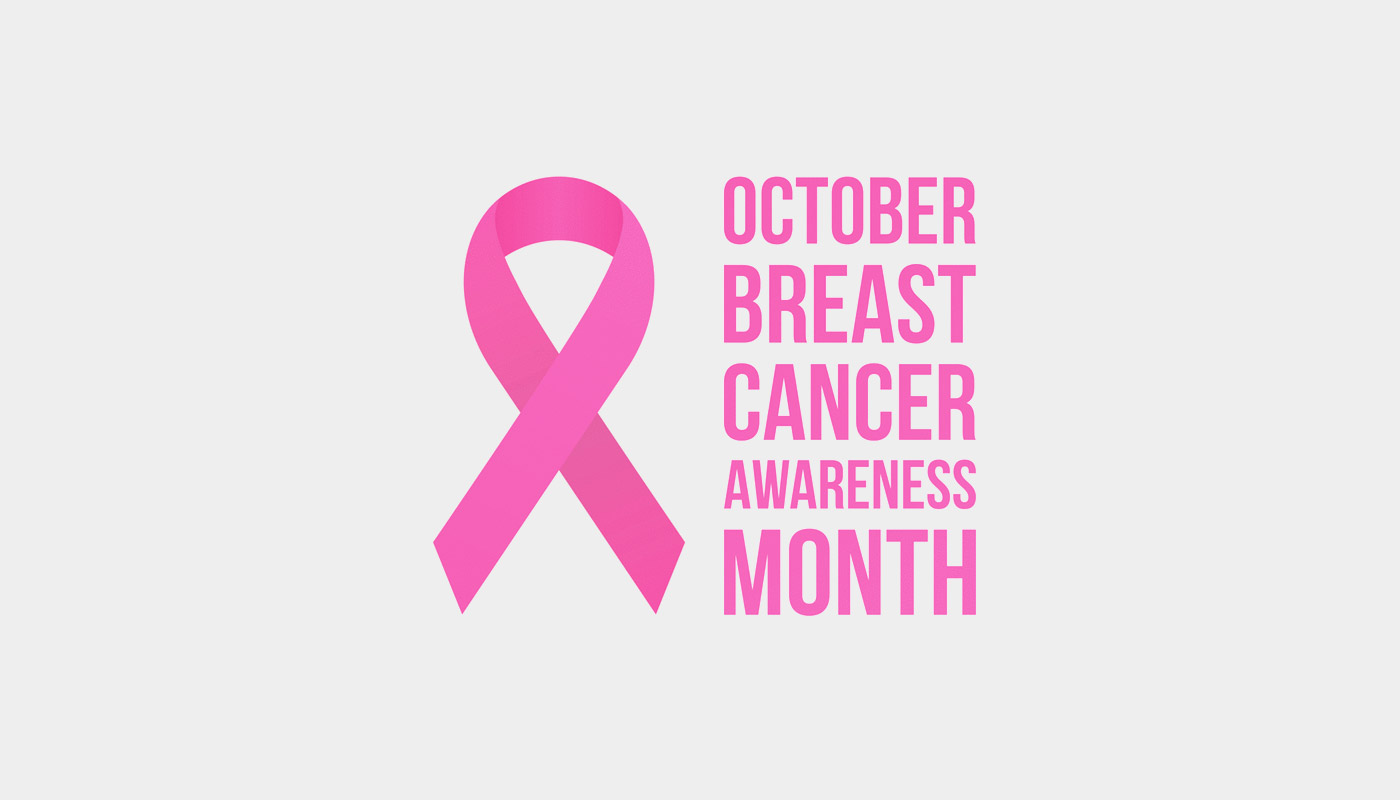Breast Cancer Awareness Month – Know the facts!

Know the Statistics
- About 1 in 8 U.S. women (about 12.4%) will develop invasive breast cancer over the course of her lifetime.
- Besides skin cancer, breast cancer is the most commonly diagnosed cancer among American women. In 2017, it’s estimated that about 30% of newly diagnosed cancers in women will be breast cancers.
- Men and women both have breast tissue. Breast cancer in men is a rare disease, but is on the rise. If any persistent changes to breasts are noticed, contact your doctor.
- Breast cancer survivorship has tripled over the past 60 years.
Breast Cancer Risk Factors
Every woman wants to know what she can do to lower her risk of breast cancer. Some of the factors associated with breast cancer — being a woman, your age, and your genetics, for example — can’t be changed. Other factors — being overweight, lack of exercise, smoking cigarettes, and eating unhealthy food — can be changed by making choices. By choosing the healthiest lifestyle options possible, you can empower yourself and make sure your breast cancer risk is as low as possible. Learn more >
Health Tips
- Breast density: Having dense breasts makes your chance of developing breast cancer four times higher.
- Know your family history
- Nutrition: Eat five or more servings of fruit and vegetables daily, limiting processed and red meats. Choose whole grains.
- Screening: Remember to get annual mammograms and clinical breast exams beginning at 40.
- Watch weight: Women who gained 21 to 30 pounds since age 18 were 40 percent more likely to develop breast cancer than those who hadn’t gained more than five pounds.
- Physical activity: Women who walk briskly for 1.25 to 2.5 hours a week had 18 percent lower risk than women who are inactive.
- Alcohol: Limit alcohol consumption to no more than one drink a day. Any more than that increases risk by 1.5 times compared to someone who doesn’t drink.
Detect Breast Cancer Early
- Breast Self-Exam
- Optional mammograms beginning at age 40
- Annual mammograms for women ages 45 to 54
- Mammograms every two years for women 55 and older, unless they choose to stick with yearly screenings
- MRIs and mammograms for some women at high risk of breast cancer
Symptoms
- Swelling in all or part of the breast
- Skin irritation or dimpling
- Breast or nipple pain
- Nipple retraction (turning inward)
- Redness, scaliness or thickening of nipple or breast skin
- Nipple discharge
Get Involved
Join the community, donate and host events!
____
Sources: breastcancer.org, cancer.org, and nationalbreastcancer.org
share this post: